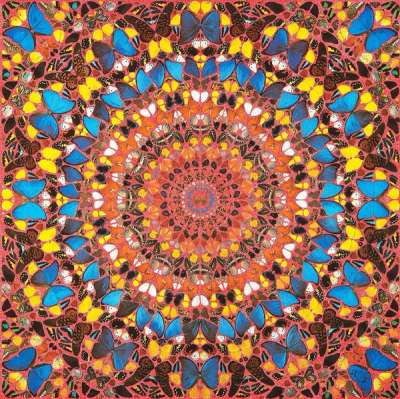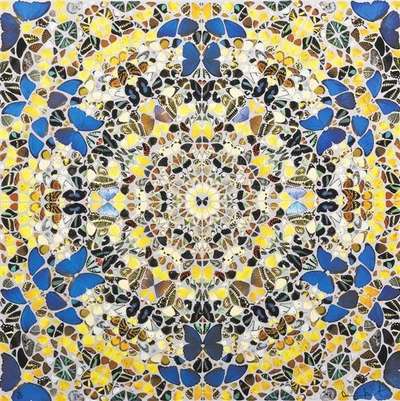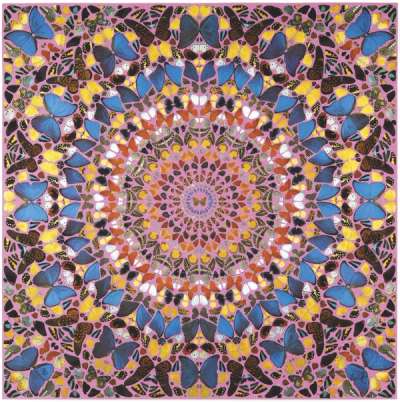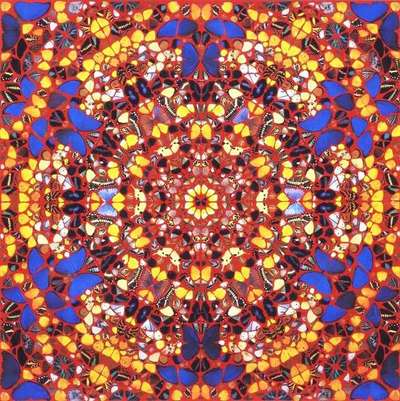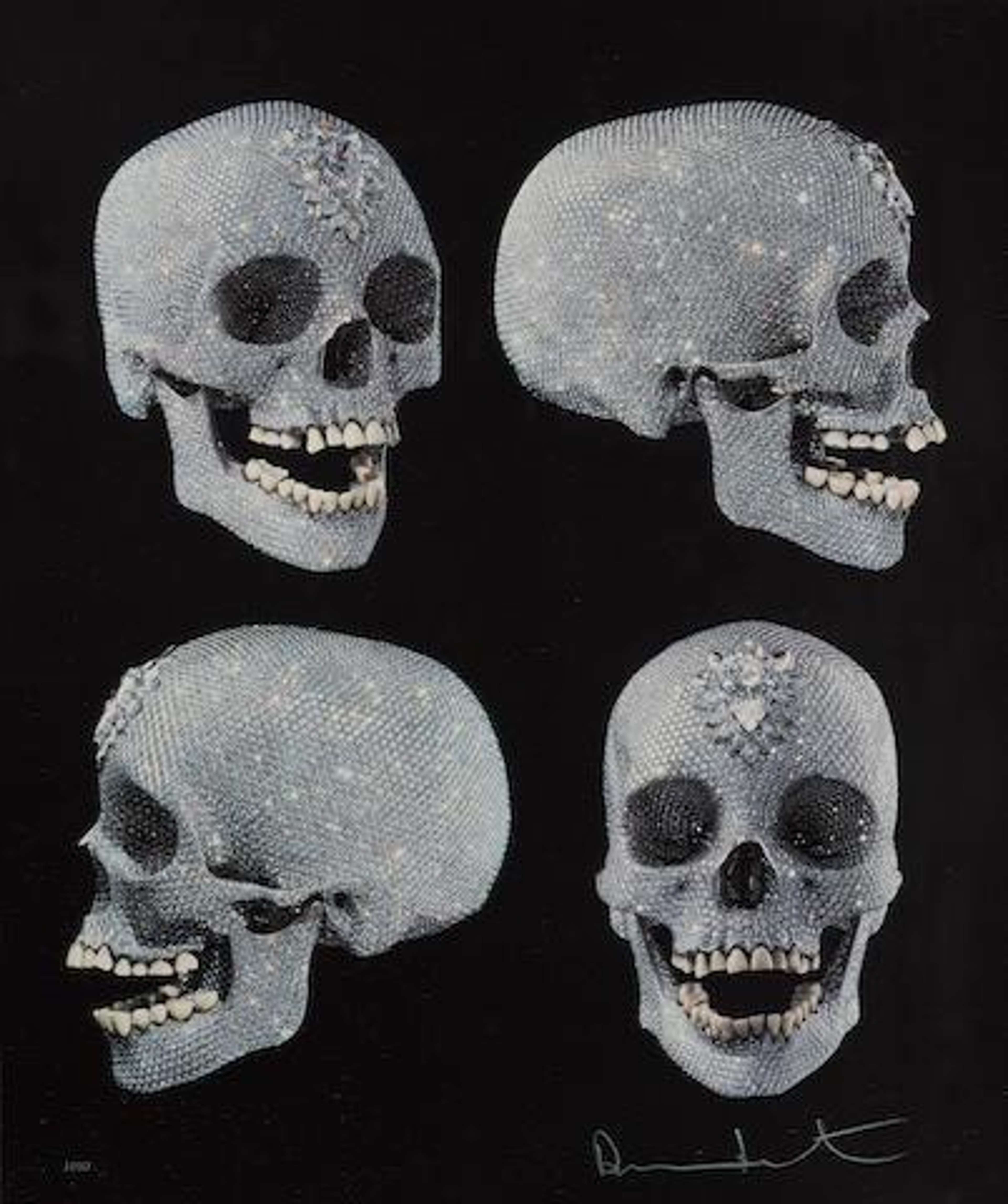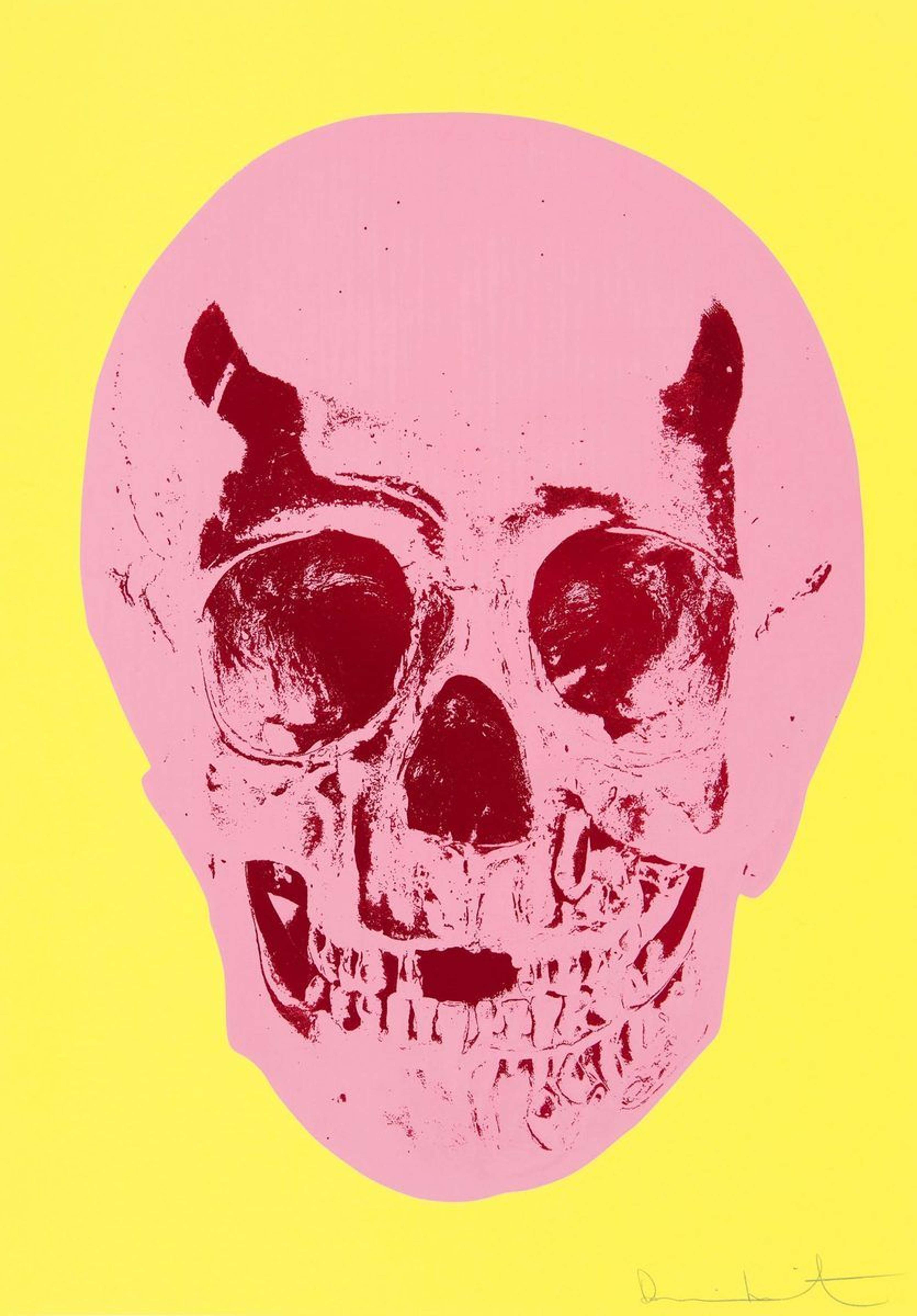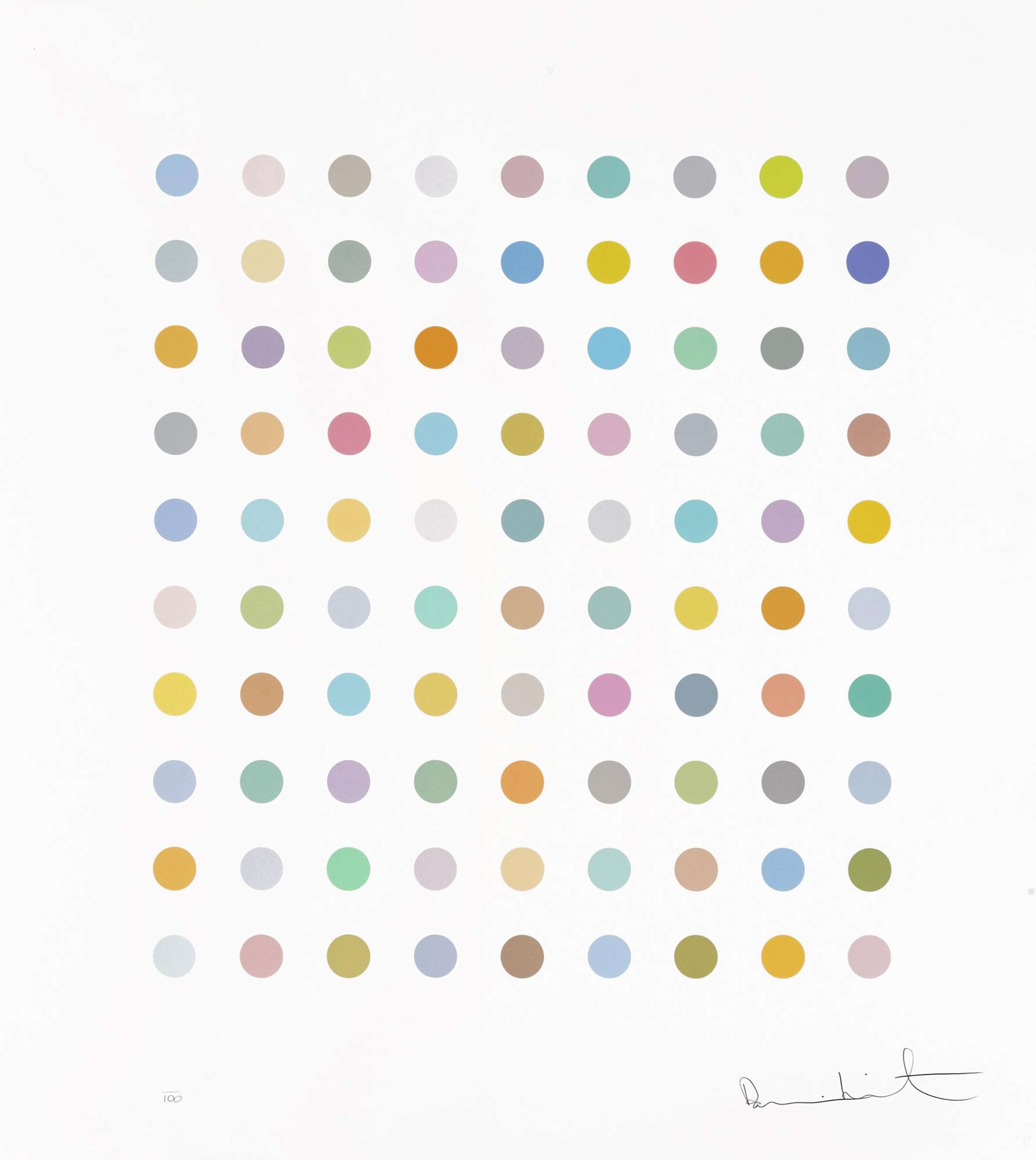 Cathedral, St Peter © Damien Hirst 2007
Cathedral, St Peter © Damien Hirst 2007
Interested in buying or selling
Damien Hirst?

Damien Hirst
673 works
Damien Hirst, the enfant terrible of the Young British Artists, has always been fascinated with butterflies. As the ultimate symbol of resurrection, the butterfly forms dizzying and vivid kaleidoscopes in his Cathedral series.
The Cathedral kaleidoscopes are formed of butterfly wings.
 Cathedral, St Peter © Damien Hirst 2007
Cathedral, St Peter © Damien Hirst 2007In this series, Hirst's elaborate kaleidoscopic works are formed entirely of butterfly wings. The body of the butterflies have been omitted to draw sole attention to the delicate beauty of their wings, and form a clearcut abstract pattern. At the centre of each of the prints is a whole butterfly, from which the kaleidoscope seems to expand.
The series speaks to Hirst's fascination with butterflies.
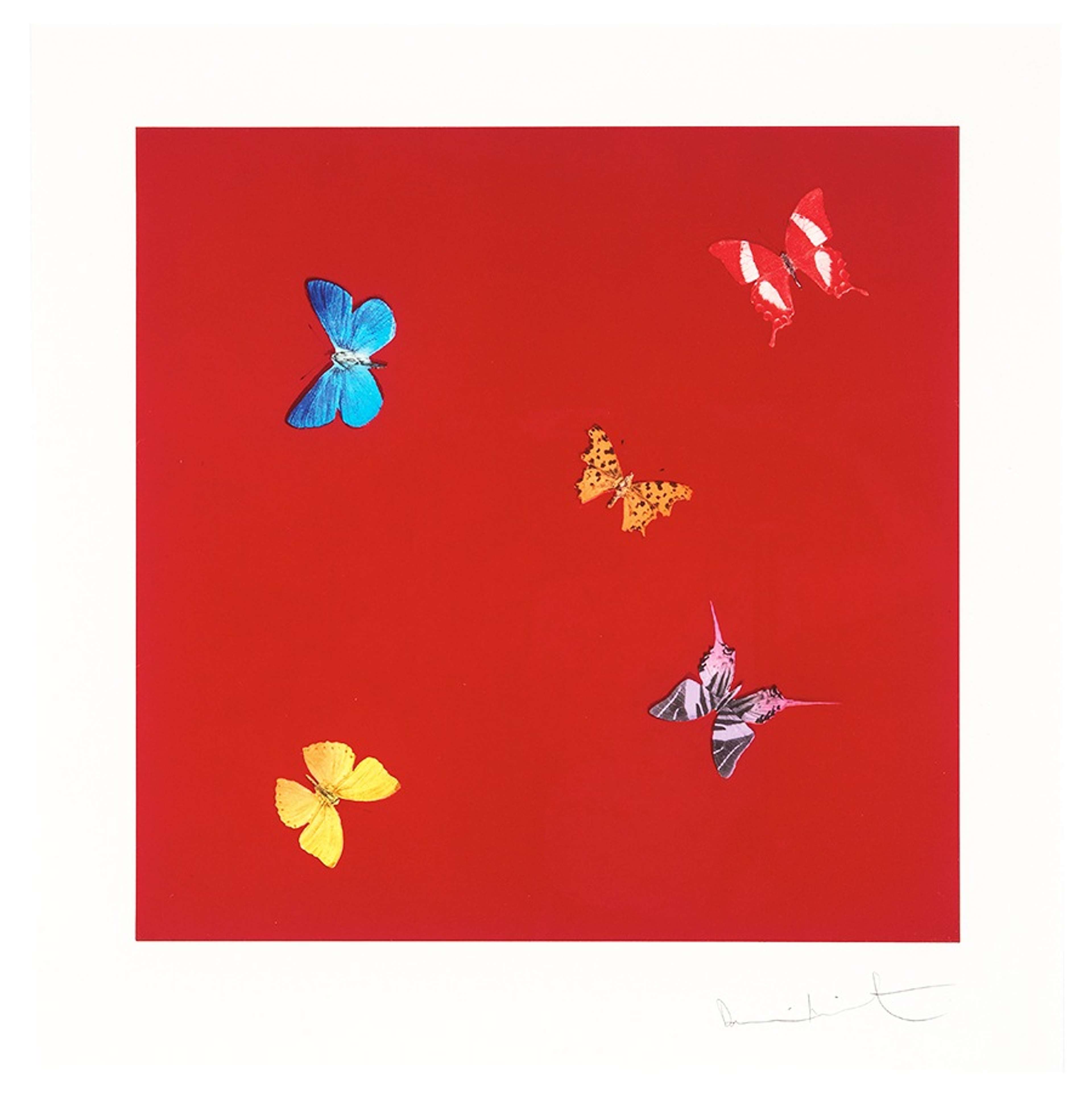 She Walks In Beauty © Damien Hirst 2014
She Walks In Beauty © Damien Hirst 2014Butterflies have been a recurring theme throughout Hirst's artistic career. From his use of live, hatching butterflies in installations, to his repeated printing of their unique wings, Hirst foregrounded the butterfly as one of the central motifs in his oeuvre. Hirst himself expressed: "I love butterflies because when they are dead, they look alive."
The prints in the series are titled after famous cathedrals around the world.
 Cathedral, Duomo © Damien Hirst 2007
Cathedral, Duomo © Damien Hirst 2007Each print in Hirst's dizzying Cathedrals series takes its title from a famous cathedral around the world. In their symmetrical compositions, the works call to mind the stained-glass and the ornate domes that characterise the architecture of cathedrals.
The series emulates Hirst's Superstition paintings.
 Image © Gagosian / The Explosion Exalted © Damien Hirst 2006
Image © Gagosian / The Explosion Exalted © Damien Hirst 2006In the year preceding his Cathedral series, Hirst staged his first exhibition in Los Angeles in over a decade, at Beverly Hills' Gagosian. The exhibition, titled Damien Hirst: Superstition, focused primarily on the motif of the butterfly. The monumental works shown at the exhibition used real butterflies to form the kaleidoscopic pattern which Hirst developed in the Cathedral series.
The prints reference stained-glass windows.
 Cathedral, Notre Dame © Damien Hirst 2007
Cathedral, Notre Dame © Damien Hirst 2007As the title of the works would suggest, religion is central to the prints forming the Cathedral series. Butterfly wings forms not only an abstract kaleidoscope, but also resemble the circular stained-glass witnessed in many churches and cathedrals. Instead of representing key moments from scripture, Hirst's iteration of stained-glass uses the motif of the butterfly alone to communicate messages of fleeting beauty and mortality.
Hirst manipulates the butterfly as a symbol of resurrection in Christianity.
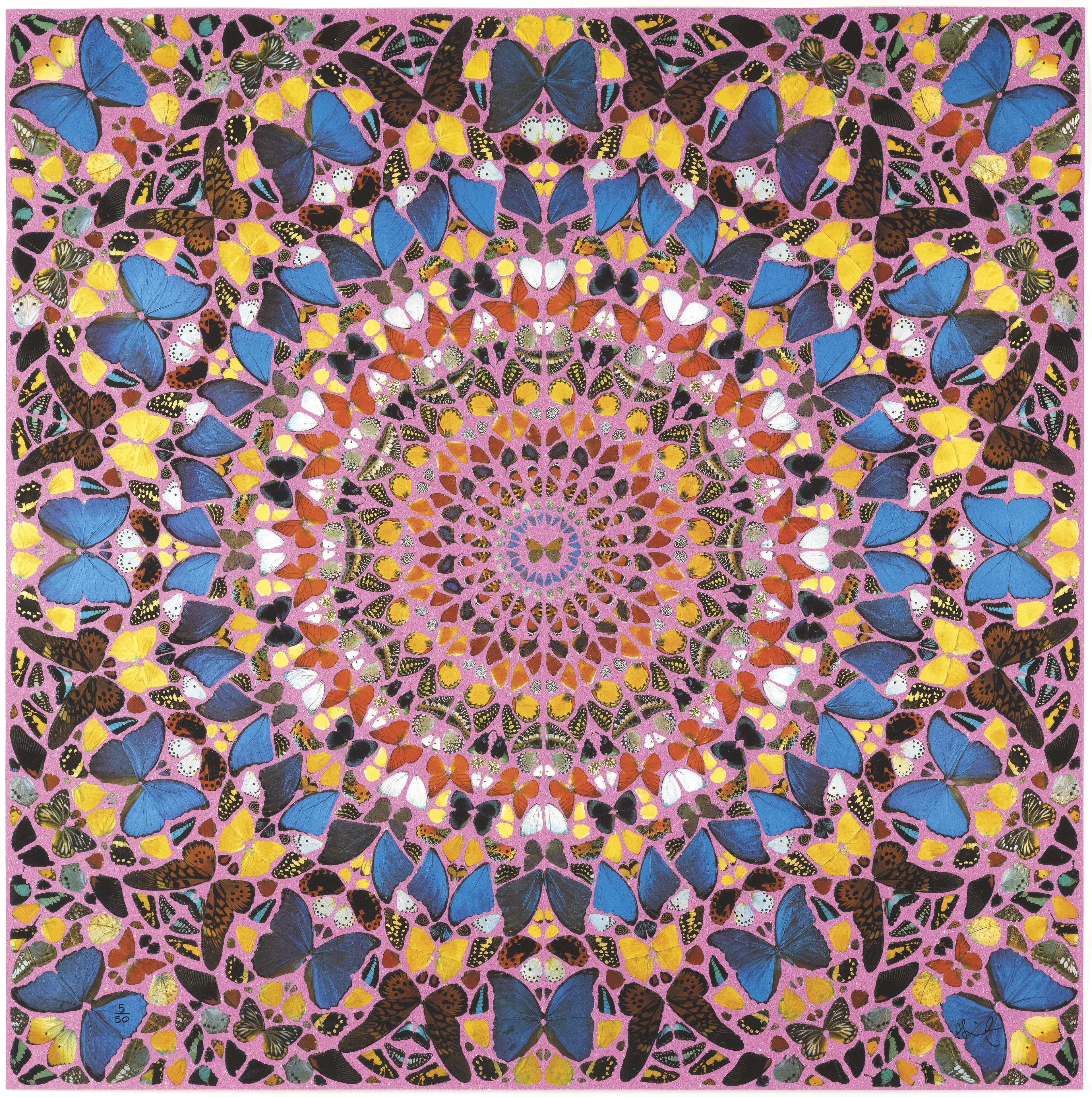 Cathedral, Palais Des Papes © Damien Hirst 2007
Cathedral, Palais Des Papes © Damien Hirst 2007For Hirst, the natural process of a butterfly being hatched from a cocoon symbolises the phenomenon of resurrection. The butterfly is also a popular motif for resurrection in Christianity, representing the metamorphosis from death to life.
The series speaks to the central themes in Hirst's oeuvre: love, religion, science and mortality.
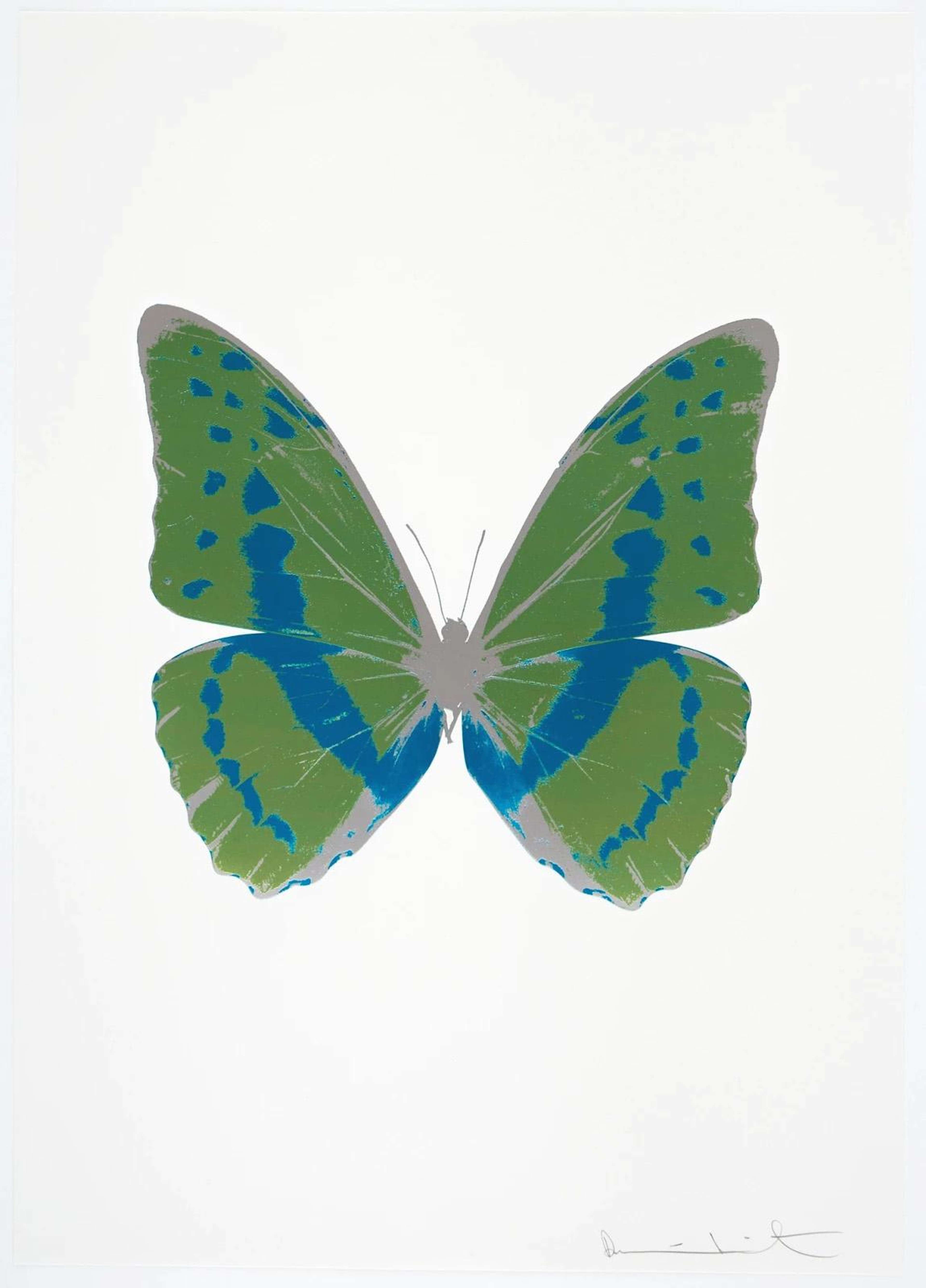 The Souls III (leaf green, turquoise, silver gloss) © Damien Hirst 2010
The Souls III (leaf green, turquoise, silver gloss) © Damien Hirst 2010The oeuvre of Hirst is alluringly macabre, marrying the morbidity of death with the beauty of life. As a favoured Christian motif, the butterfly speaks to Hirst's fascination with religion, while the aspect of taxidermy in many of his butterfly works attests to his occupation with science. Essentially, the butterfly is a delicate reminder of the fragility of life itself.
The butterflies represents the ultimate release of death.
 Cathedral, Santiago De Compostela © Damien Hirst 2007
Cathedral, Santiago De Compostela © Damien Hirst 2007Hirst's entire body of work reflects his near-obsession with death. His butterflies, which seem on the brink of taking flight, symbolise the ultimate release of death from the tribulations of life.
The kaleidoscope is a recurring motif in Hirst's oeuvre.
 H6-4 Goodness © Damien Hirst 2019
H6-4 Goodness © Damien Hirst 2019Using both real and printed butterflies, Hirst has created butterfly kaleidoscopes throughout his artistic career. The winged insects, which are naturally vibrant, form hypnotic symmetrical patterns that have an infinite appeal.
The series straddles the beautiful and the morbid.
 Cathedral, St Paul © Damien Hirst 2007
Cathedral, St Paul © Damien Hirst 2007The butterfly is an insect which is inherently beautiful. By reducing the butterfly to its wings alone, Hirst forms his kaleidoscopes with the most alluring part of their body alone. Though the butterflies in the prints are dead, the seemingly endless pattern they create alludes to the continuous cycle of life.

